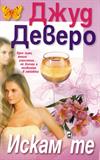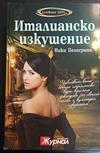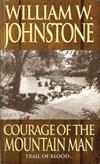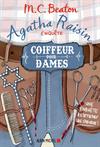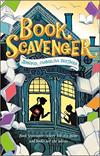
The Line of Beauty : A Novel
3 journalers for this copy...
I read this book with my book group and it was liked by almost everyone. The writing is wonderful. The story centers around a group of gay men in the early 80's. Cocaine is the drug of choice and AIDS is just starting to rear its ugly head. I'm not all that familiar with British politics but this book has lots to say about Thatcher and Parliament. Not really a feel good type of book but it kept me involved throughout.
RELEASE NOTES:
Line of Beauty has already done some traveling with me on my trip to Buenos Aires. I read most of this book sitting in San Martin Plaza park, a great place to read and people watch. Its now off to visit Zugenia. Enjoy!
Line of Beauty has already done some traveling with me on my trip to Buenos Aires. I read most of this book sitting in San Martin Plaza park, a great place to read and people watch. Its now off to visit Zugenia. Enjoy!
I just realized that I never journalled this book, which arrived just as I was packing up all my things to move to Arkansas from Rhode Island! Thank you so much for sending it to me. I'm really looking forward to reading this one.
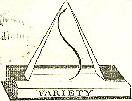
In 1753, British artist William Hogarth published The Analysis of Beauty, one of several 18th-century attempts to establish formal rules to standardize aesthetic taste. The title of Hollinghurst's Booker Prize–winning novel The Line of Beauty is taken from Hogarth's famous S-curve, which he declared inherent to all beautiful forms. According to Hogarth, "the waving line, or line of beauty, varying still more [than a combination of straight and curved lines], being composed of two curves contrasted, becomes still more ornamental and pleasing, insomuch that the hand takes a lively movement in making it with pen or pencil": the principle of beauty is the pleasure of constant variety and motion—of the hand, for the artist, and of the eye, for the viewer—and the play of contrasts of a line winding first this way and then that provides the ideal form of such pleasure. Hollinghurst's novel, which is, in addition to a consideration of Hogarth's aesthetic theory, an homage to Henry James and a portrait of London's uppermost upper class in the mid-1980s, deftly winds through various manifestations of the S-curve, and the effect is indeed one of astounding beauty. The novel's protagonist, Nick Guest, an Oxford-educated "aesthete" and James devotee who has (unwittingly?) insinuated himself into the glittering lifestyle of Britain's rich and famous, has an eye for form, and describes waving lines everywhere, from the fence that keeps the masses out of the private garden to which he himself possesses a key (as a permanent guest—ha!—of the wealthy and politically powerful Fadden family) to the posts of the bed he secretly shares with one of London's most celebrated young heirs, a kind of modern-day oriental prince. Hollinghurst, too, has an eye for winding lines, and a better sense than his protagonist of the way beauty necessarily curves its way through both dark and light—Nick will have to discover the dark side of each luminescent edge of his fast and furious life in his own time. This is a beautiful novel because all of its lines are under strict control: each sentence is balanced, each scene is minutely plotted, and the narrative unfurls in a continuing series of flights and falls, careening through thrills that plunge into tragedy with a sense of epic inevitability.
But the novel's greatest strength, I think, is not its mastery of the line of beauty, but its occasional forays into Hogarth's three-dimensional "line of grace," or "serpentine line": "the serpentine line, by its waving and winding at the same time different ways, leads the eye in a pleasing manner along the continuity of its variety, if I may be allowed the expression; and which by its twisting so many different ways, may be said to inclose (tho' but a single line) varied contents; and therefore all its variety cannot be express'd on paper by one continued line, without the assistance of the imagination." While he ruminates obsessively about the line of beauty, Nick never (as far as I recall) considers the line of grace, and the moments when the novel seems to embody this more complex and more sinister line are the moments when the writing appears to have escaped the obsessive control of its "master"—whether that is Nick, or his imaginary mentor James, or the conscious vision of Hollinghurst himself—and soars forward tracing a path through the world that has itself been set in motion. Appropriately, since Hogarth and even James are best remembered as satirists rather than pious students of beauty, The Line of Beauty's moments of sublimity appear in its severely graceful sequences of dialogue, when the characters reveal through their own lines the simultaneous heights of comedy and tragedy contained in the relentless progress of human folly. An example: While young Catherine Fadden's manic depression traces out one of the novel's lines of beauty, it is the conversation about her "episodes" that fleshes this conceit out and propels it forward into the more twisted line of grace:
"Oh, it's pathetic!" shouted Catherine, with the rush and stare of someone hurtled along by a strong new mix of emotions. ...she smacked the tabe hard, but still somehow childishly and comically; there were one or two nervous smiles. She jumped her chair back over the flags and hurried indoors.
"Um ... should I ...?" said Jasper, and sniggered.
"No, no, I'll go," said Rachel. "In a minute or two."
"Experience suggests to wait a bit," said Gerald, as if explaining some other local customs to his guests.
"An emotional young lady," said Maurice Tipper with a grin of displeasure.
"She's a very emotional young lady," said Jasper, in a cowardly mixture of boasting and mockery.
"She's quite unbalanced," Lady Partridge agreed confidentally.
Gerald hesitated, peering over his raised wine glass, but took his daughter's part. "I think I'd say she's just very softhearted," he said; which it seemed to Nick was just what she wasn't.
I'm not sure Hollinghurst himself would pick out a moment such as this to illustrate his best talents as a writer—the novel is certainly full of more beautiful passages—but this is where the writing seems to me most wise, in a serpentine kind of way, exposing its characters in a heady mix of comic derision and profound insight into the things people don't know about themselves, and which will only appear to the more vigilant observers in retrospect, after the full movement of the narrative line has been completed.
On its way to beachglass in a reverse wishlist relay.
Just received in the mail from zugenia...thank you for sending this title from my *wish list*. I look forward to reading it!
I can't possibly write a better review than the two written before me, so I will just say I agree with most of what they both wrote.
:-)
Thank you for sending this for me to read!
:-)
Thank you for sending this for me to read!
